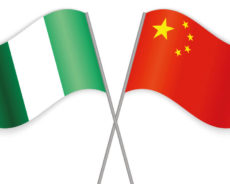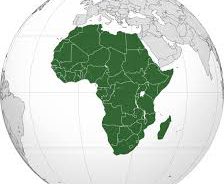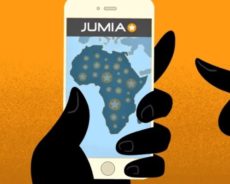- Forecasts 5G to cover more than 40% of the world’s population by the end of 2024
- Projects IoT connections to hit 4 billion in six years
- Mobile data traffic up by 79% in Q3 2018
Nigeria has been urged to brace up as the (5G) fifth generation of cellular mobile  communications is gradually facing out the existing 4G, 3G and 2G systems.
communications is gradually facing out the existing 4G, 3G and 2G systems.
According to multinational networking and telecommunications company, Ericsson, the 5G technology will cover more than 40 percent of the world’s population by the end of 2024.
And with the trajectory growth that will be experienced across all the globe, Ericson projected that Internet of Things (IoT) connections will surpass 4 billion in six years’ time.
Mobile data traffic across the globe grows by 79 percent year-on-year in Q3 2018, pointing to the need of 5G technology despite the evolution Long Term Evolution (LTE).
According to Ms Nora Wahby, the Head of Ericsson West Africa, 5G technology will be of great and immense benefit not only to the economic growth of the Nigeria but to the continent at large and the global village.
She explained that 5G performance targets high data rate, reduced latency, saves energy, effect cost reduction, enhance higher system capacity, and massive device connectivity.
Speaking on Ericsson Global Mobility report for the third quarter of 2018, Nora noted that there would be 8.9 billion mobile subscriptions by the end of 2024 globally and mobile broadband subscriptions would reach 8.4 billion, accounting for close to 95 per cent of all mobile subscriptions.
According to her the number of unique mobile subscribers was also estimated to reach 6.2 billion by the end of the forecast period. She said that mobile broadband would complement fixed broadband in some segments and would be the dominant mode of access in others.
Wahby said that according to the forecast, the subscription for PCs and tablets with mobile capabilities were expected to show moderate growth reaching 330 million in 2024. She also said that smart phone penetration continues to rise , driven by the increasing affordability of devices.
“The report forecasts that the number of smart phone subscriptions would reach 7.2 billion in 2024 and almost all would be for mobile broadband, ” Wahby said.
She explained that the Middle East and Africa, which comprises of over 70 countries, at the end of 2018, would have more than 20 per cent mobile subscriptions for Long Term Evolution (LTE). “The sub-Saharan Africa will account for more than seven per cent LTE subscriptions,” she said.
Wahby said that the region was anticipated to evolve over the forecast period while 90 per cent of subscriptions and were expected to be for mobile broadband by 2024. According to her, the driving force behind the shift include a young and growing population with increasing digital skills as well as more affordable smart phones.
Wahby said that in the Middle East and North Africa, significant 5G subscription volumes were expected in 2021 and in Sub-Saharan Africa in 2022. She noted that in the Middle East and Africa, the total mobile data traffic was expected to grow nine times during forecast period which was 2024, representing the highest rate globally.
“Smartphone subscriptions are projected to double, increasing penetration from 45 per cent to 70 per cent. “In 2024, total monthly mobile data traffic is projected to 17 Exabyte, ” Wahby said.








